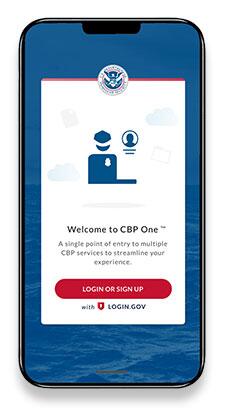
As part of new methods to enhance border enforcement and expand tools for local immigration, the U.S. Department of Homeland Security (DHS) last week debuted a new scheduling function on the CBP One mobile application to allow appointment requests at land ports of entry.
Only specific land ports will be eligible, but the Biden administration claimed the new measure would aid safe, orderly, and humane border processing. The application is meant to help noncitizens located in central and northern Mexico gain lawful access and arrange for both inspection and the beginning of protection claims without making them wait at ports of entry directly once Title 42 enforcement ends. The goal is to reduce wait times and crowding at U.S. ports of entry.
While the Title 42 public health order remains in effect under court order, only noncitizens considered for humanitarian exceptions will be able to use CBP One. Customs and Border Protection (CBP) will take individuals on a case-by-case basis purely based on their circumstances. Therefore, claimants will have to prove their vulnerability upon presentation at points of entry.
“The CBP One app is an innovative solution we are using to facilitate the safe and orderly arrival of noncitizens who believe they meet certain vulnerability criteria and are requesting a humanitarian exception to the CDC’s Title 42 Order,” Secretary of Homeland Security Alejandro Mayorkas said. “When Title 42 eventually lifts, this new feature will join one of the many tools and processes this Administration is providing for individuals to seek protection in a safe, orderly, and humane manner and to strengthen the security of our borders.”
CBP One is provided for use without cost. Noncitizens seeking exceptions to the Title 42 order will be able to use the application to submit certain biographic and biometric information to CBP – including live facial photographs and the normal advance information provided at ports of entry – and schedule their appointments up to 14 days ahead of time. From there, they will be able to proceed to inspection at any of eight sites: Nogales, Arizona; Brownsville, Eagle Pass, Hidalgo, Laredo or El Paso, Texas; and Calexico and San Ysidro, California.




